Hi! By some stroke of luck you’re reading, “Yes, I Am A Hungry Woman.” Have you subscribed?
In the throes of Wintertime, I begin to think of farmers markets.
I wish for the gentle rhythm that market season provides in our spring-through-autumn Saturdays, and how its tables heaped with leafy greens and flame-striped bell peppers call me out of the house early on a weekend. I think of the happy crush of people and dogs and canvas totes and the ubiquitous Farmers Market Music weaving in between, played by some red-faced man in a Panama hat with an open guitar case and an over-extended amp; a man whom everyone is ignoring, which always makes me feel guilty but also: I am here for the vegetables. I think of a melting, sweating cup of iced coffee wrapped in a damp napkin keeping me company while I stand in line for a doughnut handed to me, hot from the fryer, off a wooden dowel by a Mennonite girl at the doughnut truck. It tastes like magic even though it burns my fingers, and the black iced coffee washes it down as an amen.
When I’ve been foolish enough to contemplate farmers markets that early in the year, I start getting antsy way before there’s any chance to fulfill that “let me buy all the pickling cucumbers you have” impulse. We are lucky enough to live in a temperate area where year-round there will be one market open weekly (mostly for pickup orders) as well as a monthly market. In winter these aren’t the fullest example of farmers’ markets, as there is nothing growing that will be sold, but it is possible to get a good bag of bones for a soup, or a dozen eggs, and the mushroom growers can usually be relied upon for a pound of shiitakes. Sometimes the oyster men show up, but rarely. These winter markets are well-attended because we all feel the absence of the growing season, but we know that the real event is yet to come. And anyway, one or two markets open is nothing compared to the dozen or more within an hour’s radius that crop up in the warm weather, including some that operate twice a week.
This Saturday marked the first full-time farmers markets in our area, and you bet your buttons I was there with my Vivi et Margot market tote. (Which, incidentally, is on sale for $68 vs. the normal $85 and is a huge and high quality French basket. Get one.) Several of the area markets were due to open, but got postponed due to high winds. The Old Beach Farmers Market though, operated as usual. Vendors opted not to set up tents and so the market looked strangely open and vulnerable: just tables of wares under a sullen sky, cloth and signage all but flying away in the strong gusts. I filled the basket under my arm with rainbow carrots, a bag of mixed baby greens (frisee, peppery tatsoi, butter lettuce, and other leaves), white sweet potatoes, and a large bouquet of hellebores and kale blossom. My mom came with me and bought the year’s first quart of local strawberries and a jar of honey. We shared the strawberries when we got home.
It’s hard to believe some of the fields are open for picking, but it is April! Most markets in the Tidewater area of Virginia (where I live) tend to open sometime in April and run through October or early November. In my best form, I have the schedules of each individual market memorized, including the biweekly ones, and manage to show up to most of them at some point or another during the season. And although we are no NYC when it comes to the size and diversity of these markets, I am always really thankful that there is such a community support for the markets, and the farmers who supply them.
A nearly-forgotten part of my personal history is a specific point during high-school when my family and I farmed nearly two acres of gardens. We did this for a year or so, working countless hours in all weather to cultivate vegetables, herbs, and flowers using organic practices. Mornings were spent in the extensive garden as well as early evening - we crammed all our schoolwork into the afternoons when it was too hot to work outside.
It was fun at first to poke nearly-invisible seeds into little seed trays and gently brush the feathery sprouts with an index card to stabilize their roots, then “harden off” the teenage plants on our sunny front porch. But when we planted these small sprouts in the newly-broken earth of our garden plot, everything changed. The weeds came back with a primal vengeance, since the plot had been a fallow field before tilling. To make the workload worth our while, we had committed to showing up at two markets per week which meant two rounds of harvest, prep, loading, unloading, standing at the market watching customers buy one bunch of basil or two jalapeños at a time, loading everything back into the van, scarfing a bowl of Chipotle on our way home, unloading everything again, and tending to whatever work there was left to do when we got back. I remember that year as being challenging but I don’t think I realized exactly how challenging (or did I?) until we were out of it. It nearly killed us (sometimes literally if you count the time I accidentally slammed a cast iron post-tamper into my skull instead of the targeted tomato stake), and it cemented for me the truth that farming is one of the hardest jobs. And were beginners at it.
We misjudged the watermelon planting schedule and had to harvest every single melon that had ripened at the same time into my dad’s trailer - of course we didn’t sell it all. We picked produce and carefully bundled it, only to take most of it home after a bad market day. Laundry baskets filled our home, holding harvests of zucchini, summer squash, cucumbers, and more. We waged endless war against pests we had sworn not to use chemicals on - a war it felt like we lost from the start as we watched regiments of squash bugs and pajama-striped potato beetles threaten our harvest. The methodical drudgery of weeding was almost pleasant, as it left my mind free to wander till the lucky sibling who was “house manager” for the day called us in out of the blistering heat for ice-cold glasses of lemonade.
That year was ruthless. Beautiful, in terms of the time spent outside, the way our plants eventually thrived, the flowers that did manage to bloom through the heavy soil and pestilent weeds; but no quarter. Everyone felt it, and my parents refused to repeat the professional farming experiment another growing season, for which we were all thankful.
Lest we forget, my family made it exactly one year in the agriculture business. And even though serious farmers have more streamlined processes, more equipment and experience, and more skills…farming is hard. That is it. My personal whining about our mini-career as organic farmers aside, it gave me a monumental respect for people who do farm for a living, and (unlike my family), don’t quit. And, having been the person breaking her back for a week only to sell $28 worth of produce in an entire day, I will always buy as many vegetables as I can afford from these farmers rather than stopping by Aldi on my way home. (Plus, after peeling fat, neon-green hornworms from a tomato plant it has just butchered overnight, I’ll never complain about the price of a pint of organic Sungolds again.)
So, we are back to farmers market season and I feel like if we can get amped up for market season right now on the very cusp of it, we will have our most fulfilling experience yet. My goal this year is to make a larger portion of my household’s food than ever come from farmers - it is a way of life that I do not want to see overruled by huge corporations, and that means that I’m putting my money where my mouth is. Besides, I’ve always enjoyed shopping at the markets, and have always been envious of cities worldwide with daily markets where it is possible to shop for what you need any day of the week. How do you make the most of the markets you have access to? Here are the ways I try to operate, that have worked very well for me!
Find your personal favorite market - a lot of regions have a list of farmers markets that is accessible either through the local agriculture website or tourism board. If you do not already have a favorite market, I recommend picking several options to try across a month or two. You will fairly quickly grow an affinity for a specific market or two. I have two favorite markets I reliably make it to, one I enjoy hitting on the rare chance I can go on a weekday, and one that is my “road trip” market. Many factors go into choosing a favorite market. For me, these things are: parking availability, timing of market (I can seldom make the weekday or evening markets), diversity/number of vendors, a majority of edible goods being sold (I don’t love craft markets that masquerade as farmers markets), and proximity to home! Some markets (like the Williamsburg farmers market) have a good parking, huge diversity and number of vendors, but are an hour from my house. I am unlikely to visit that more than a couple times per year. Others (any of the Chesapeake markets) are close to my house with plenty of parking but have only four or five vendors and are not attractive compared to the markets only twenty more minutes away.
Shop the market before the grocery store - if I know that I need to do a grocery restock, I try to prioritize getting my produce and some of my meats/eggs from the market before setting foot in the store. With current grocery prices and the quality of ingredient I choose to buy in any case, there is often a negligible difference in cost. What I can’t find or won’t spend at the market can then be bought from the grocery store later. This tactic of shopping the market first minimizes waste. I used to go to the market as an addendum to my usual grocery shopping and would then have a glut of vegetables that I could never run through as quickly as I needed to. Something would inevitably go bad before I got around to using it and I always felt guilty about the waste. Another tactic for making sure I purchase a considerable amount of my groceries here is to make sure I’m bringing enough bags or a big enough basket to easily carry my purchases around the market. I only have two hands and if they’re filled by one bag of mushrooms and a growler of kombucha, I don’t want my shopping trip to be over.
Clean and properly store your farmers market haul when you get home - this is a partner step to the one above. When you get home, make sure that you put away everything you bought in the way that will help it last longest! For me, this means trimming tops off of carrots, carefully stashing fresh herbs in loose, airtight storage, de-ribbing kale and washing it, freezing the meat I won’t be using today, etc. It’s so much more motivating to use the beautiful produce you bought at the market when it’s already washed, stashed, or kept at the ready. Plus, it will typically last longer than it would if improperly stored, which is another point in the anti-waste category!
Follow your favorite markets and vendors online - this is a tip I wish that I had used more when I first started going to markets regularly. In-the-moment updates from your farmers market on Facebook or Instagram are the best way to check about changes to plans, or to keep you from assuming that plans have changed due to weather or some other reason. For instance, I used to assume that all markets were cancelled on rainy mornings, but have found that this is not always the case. Similarly, I was able to keep track of all the markets closing this weekend due to wind, but could see that the Old Beach market was still on. The ability to share updates like this helps so much to mitigate confusion, which in turn maximizes attendance. Signing up for your favorite vendors’ email lists and social media is not only a great way to help out their visibility and reach, but also benefits you, as you’ll be aware when they’re running a sale, have a special pre-order deal, or are “dropping” new products. Additionally, a lot of farms have a pre-order situation where you can access more products than they bring to market. (i.e. a farm might not ordinarily bring beef liver, ribs, or some other cut of meat, but if you’ve preordered online they are able to bring your specific order to be picked up at the market.)
Get to the market during the first hour or so - I know that people like to sleep in on weekends, but if you are going to maximize your fun at the markets, this is a key point. A lot of markets begin at 9 AM and my target arrival is always 9:30-10:00. I don’t like getting there exactly at opening to give the vendors the grace of a little extra setup time, but I love to be there before it gets super crowded and before things are picked over. If you arrive after the halfway point of the morning (at a 9-12 market this means after 10:30), you will still have fun but will find that pickings can be slim. The best priced free-range eggs will be gone, the finest of the produce, the prettiest flower bouquets, and your pick of juices, meat, and breads. Some vendors are so picked over (or in such a rush) that they begin breakdown at 11:30, and it can be awkward to be arriving at the market while everyone is packing up. And while I love to see sold-out farm tables, that isn’t the energy I suppose you’re looking for.
Build relationships with the vendors - okay, so I’ve yet to totally hack this one. Apart from my friends at Full Quiver Farm (shoutout to the Katie Wilson whom I have known since actual birth), nobody I buy from knows my name or probably recognizes me at the markets. However, I do like to frequent the same tables and vendors for my own sake. I like knowing who has the sweetest carrots, the best lettuce, the prettiest bouquets of flowers, and where I can reliably get chicken backs and necks for bone broth. I like buying handmade pasta from Salvatore, and sipping flimsy paper sample cups of kombucha from the kombucha girl. It’s a one-sided relationship, but one I love. I hope one day to actually be known by these vendors, but I’ll take a familiarity with their wares for now.
The best part of attending markets throughout the year is seeing what changes as the seasons progress and different crops come in and go out of rotation; how the palette of the market slowly morphs; the dark, leafy greens of early spring to the yellows of the early summer squash…how it changes to deep reds and orange and luminous purple of late summer, then the goldens and ochres of early fall. To keep time with a market through all the seasons is such a special thing. Then it will be winter again, and we will huddle under fluffy blankets and anticipate the heady rush of spring’s new growth and the reopening of our favorite markets of all. I am thankful for farmers, and all the makers who pour their skill into creating these spaces in our community! Let’s support them really well this year, so that they can continue doing what they are breaking themselves out to do. It is important, sometimes-brutal, really lovely work that benefits so many of us. Shop around so we can keep them around. We love farmers!
My favorite markets in the 757:
East Beach Farmers Market (bay area), Norfolk, VA
Old Beach Farmers Market (oceanfront), Virginia Beach, VA
Ghent Farmers Market, Norfolk, VA
Cullipher Farm (farm stand in Pungo) Virginia Beach, VA
Williamsburg Farmers Market (Colonial area), Williamsburg, VA
My Favorite Vendors:
Full Quiver Farm (pasture-raised meat and eggs, breakfast sandwiches at the market)
Liliana Produce (vegetables, potted flowers)
Lokal (sourdough breads)
Capstone Mushrooms (mushrooms, grow-kits)
Fritillary Farm (fruits, vegetables, flowers grown with a focus on agroecological principles)
Klassic Donuts (THE donut truck. It pops up, we are slaves to it.)
Pasta E Pani by Salvatore (handmade pastas and sauces)
Rehoboth Farm (pasture & forest-raised chicken and pork)
Seafield Farm (vegetables, honey, eggs)
Agriberry Farm (seasonal fruits and fruit-products like jams, butters, fruit leather, etc.)
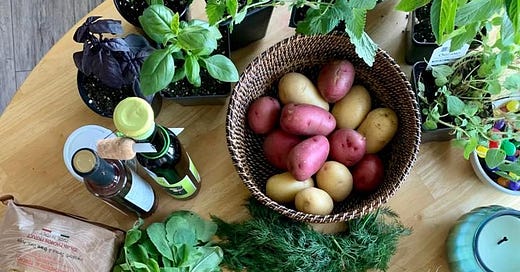



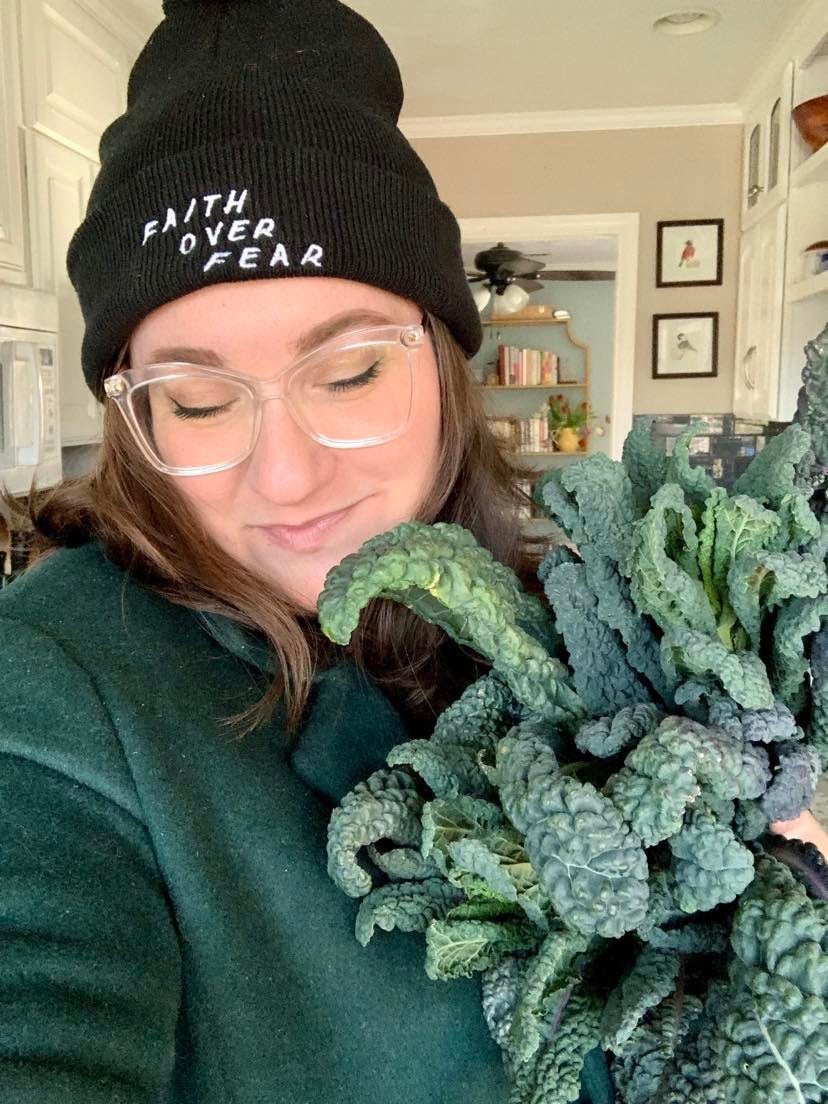

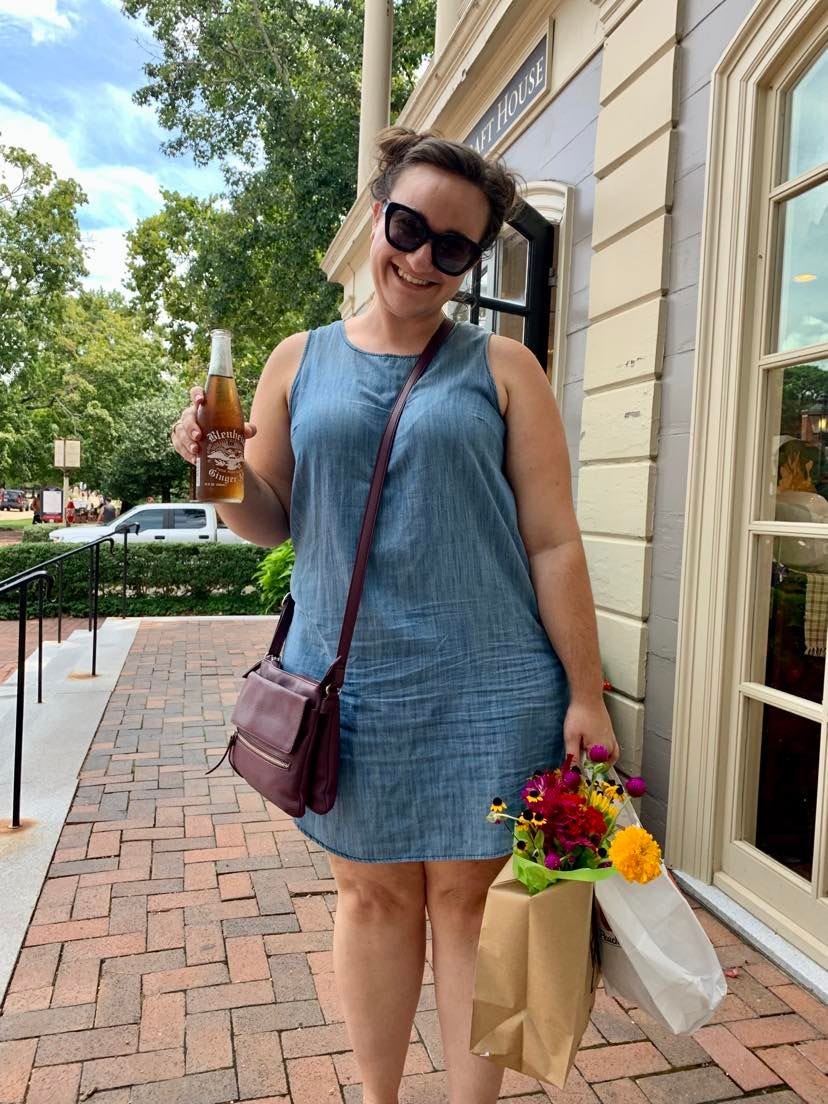
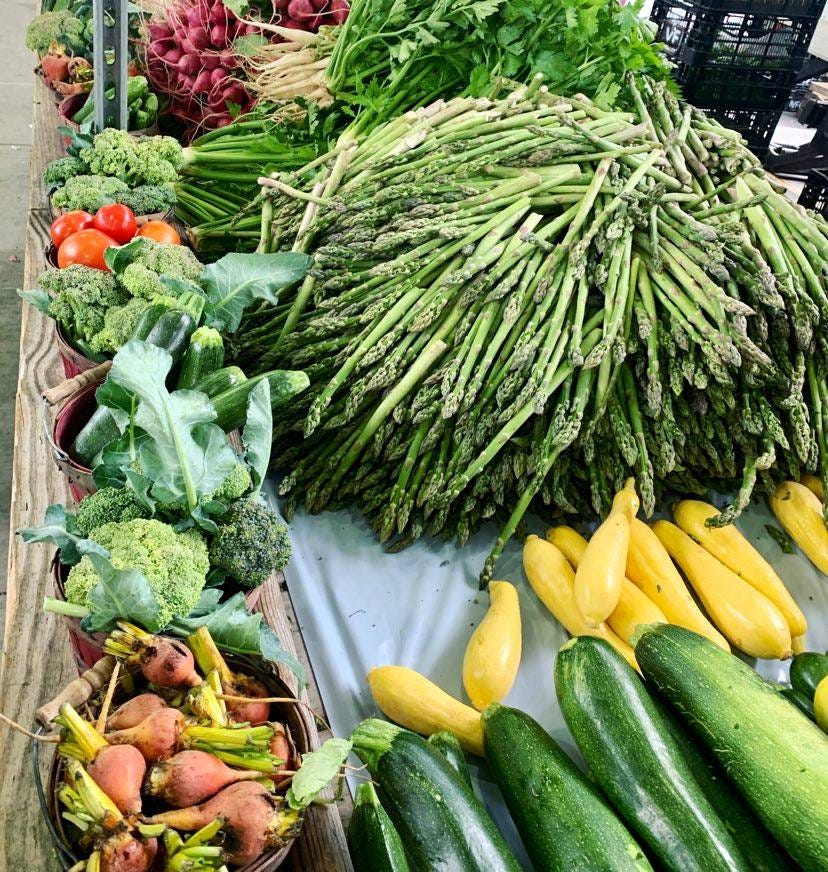
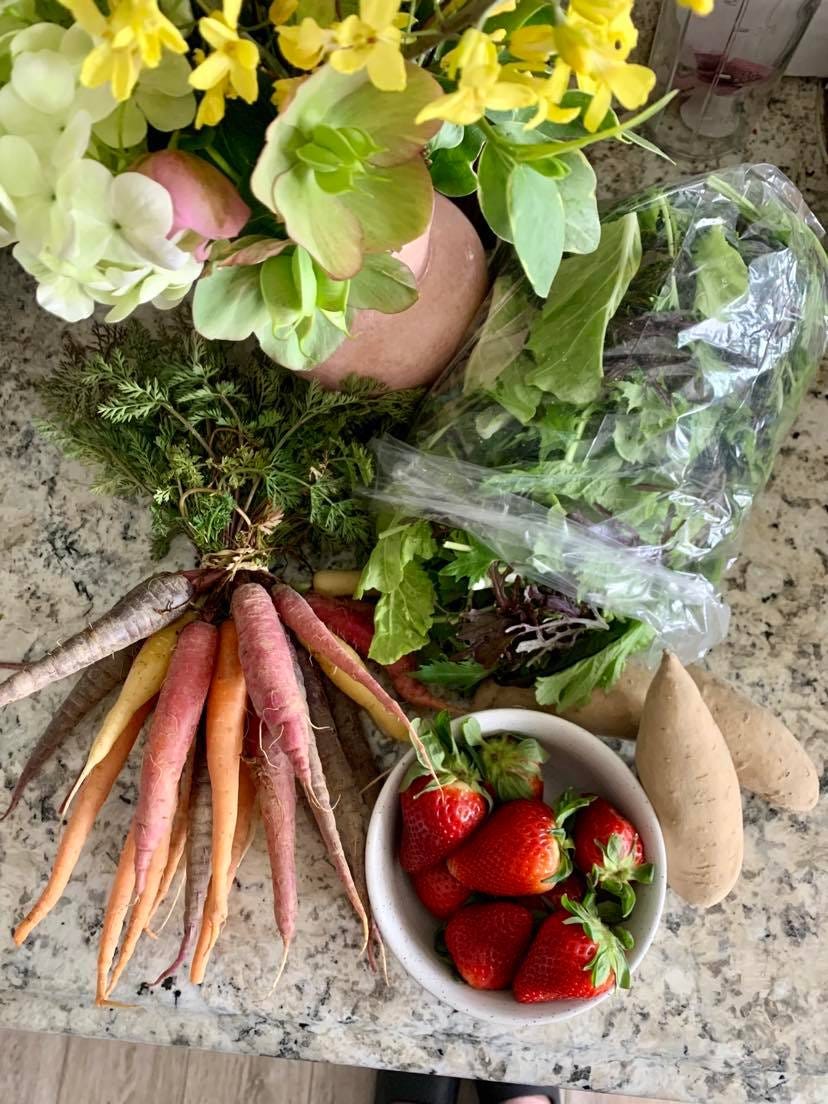
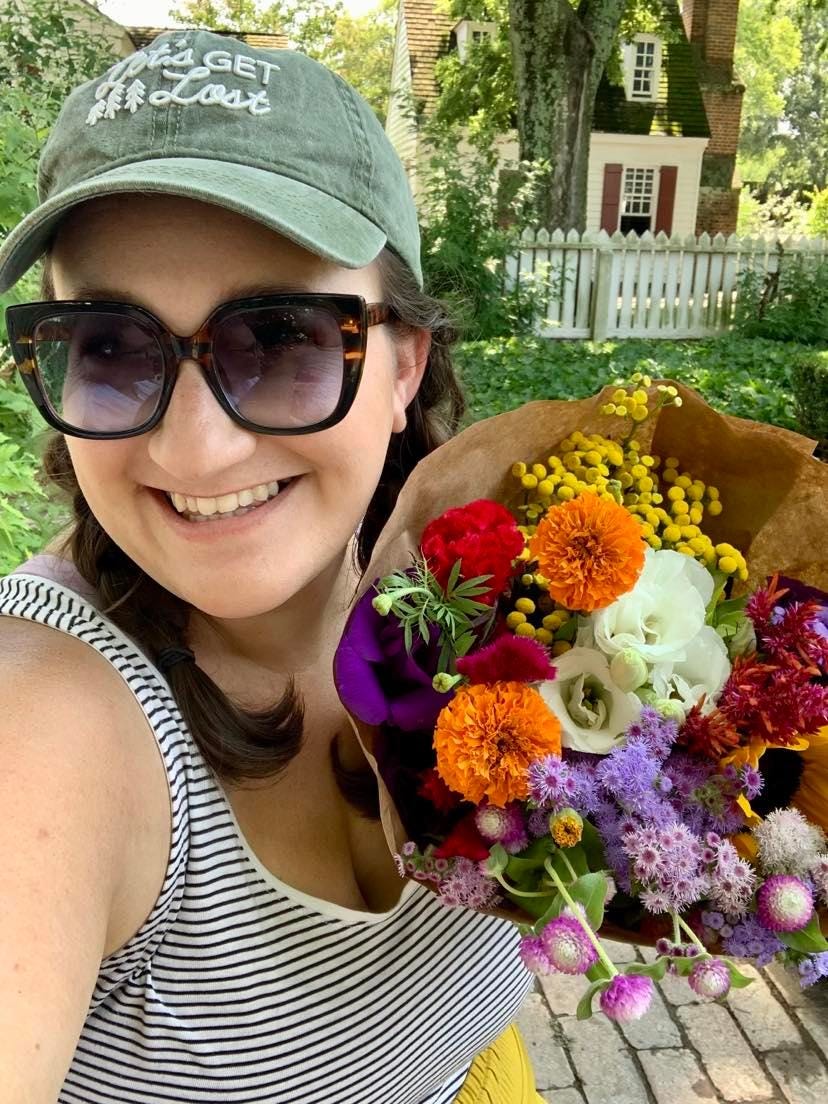
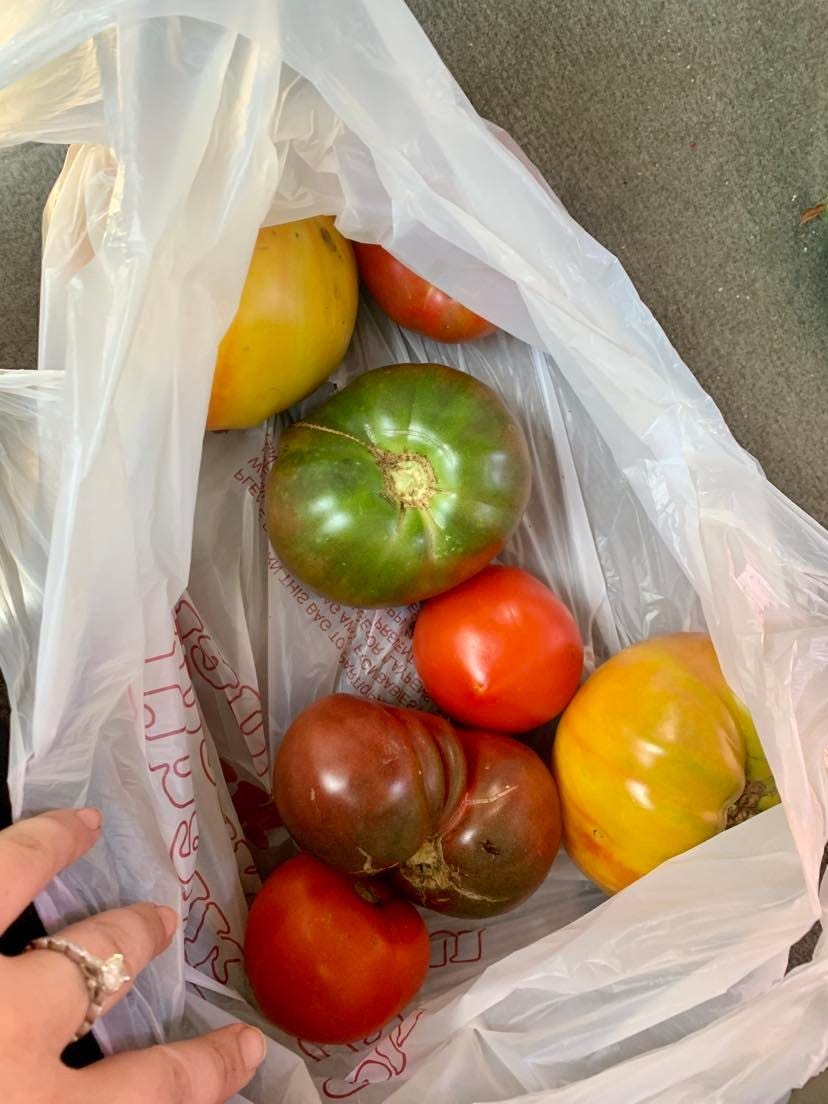
Hornworms are the worst! Especially since it’s so hard to see the little ones until they’ve grown ginormous off the leaves. Anyway, I enjoyed this immensely and will be keeping these tips for future reference, as I’m one of those people that wants to incorporate farmer’s markets into life but has struggled to make it work.